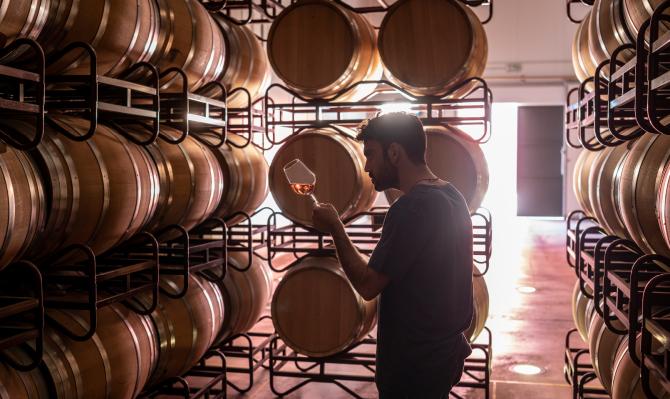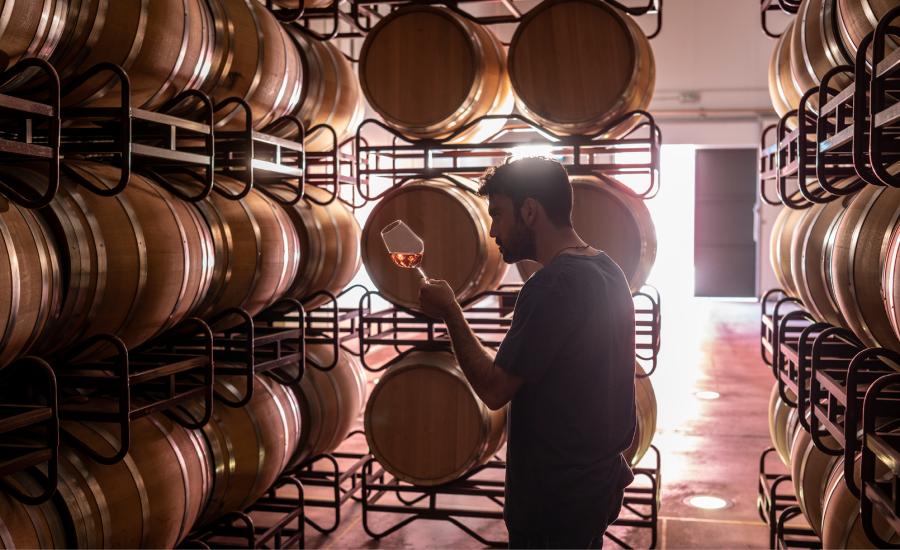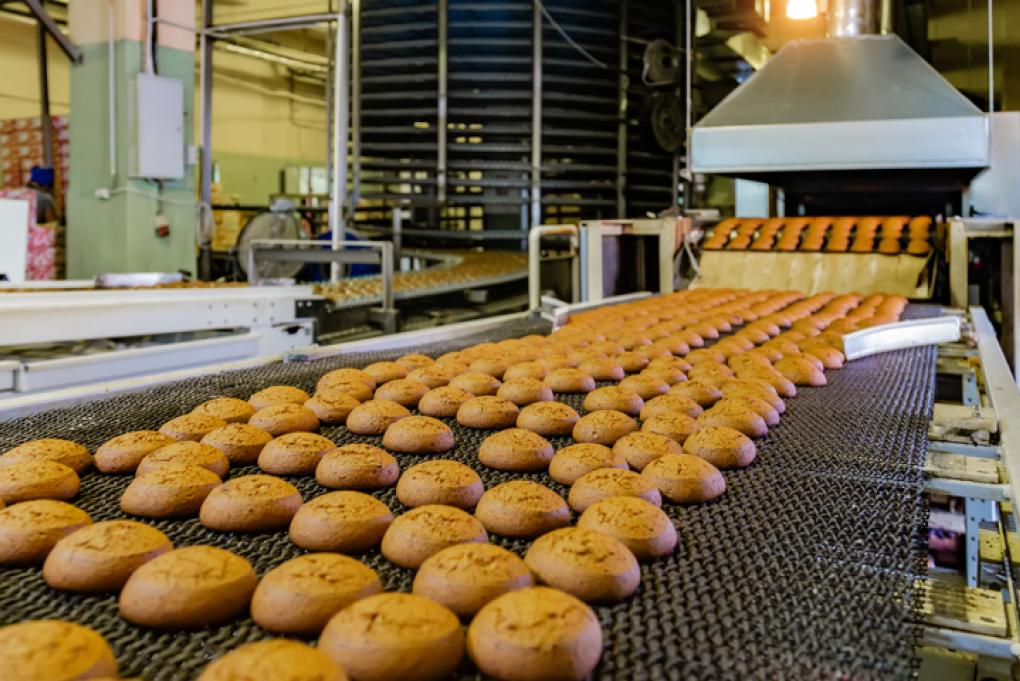
The Spanish wine industry, a symbol of tradition and global standard
The wine sector plays a fundamental role in Spain, not only in economic terms due to its contribution to activity, employment and exports but also because of how extensively vines are grown and its regional importance, making it a driving force for environmental conservation and rural development. Spain is the world’s second largest exporter of wine in volume and third in value, although in recent years we have seen greater penetration in North America and Asia, markets that tend to buy wine of higher value. After the COVID-19 crisis, wineries and cooperatives must tackle important medium-term challenges and adapt to the new consumption habits of a younger, more digital and environmentally aware public. This strategy includes a commitment to organic farming, online sales and wine tourism.
The wine industry’s value chain
The value chain of the extensive wine industry begins with the planting and cultivation of vines (viticulture) and, once wine has been produced (viniculture), continues with its distribution and marketing. The sector is therefore made up, first of all, of more than 550,000 wine-growing businesses,20 which tend to be very small on average (with barely 1.70 hectares). In fact, 68.8% are below half a hectare and only 3.9% own more than 10 hectares.
Secondly, we find over 4,000 wine-producing firms.21 Cooperatives, a business model that is deeply rooted in the sector,22 account for around 60% of production in terms of volume, although in value the large winemaking groups stand out, with a more diversified supply and significant export volumes.
Finally, there is an extensive network of distribution and sales businesses for wine-related products. Wineries can sell directly to the end consumer or through other channels, mainly hospitality (hotels, restaurants and cafés) and retail (supermarkets and hypermarkets), which account for 31% and 35% of total sales by volume, respectively (2018 pre-pandemic figures). However, the average price of wine sold through the hospitality channel is almost four times higher than that sold via retail, so that, in terms of value, hospitality sales exceed 50% of the total, as can be seen in the chart below.
- 20See MAPA (2021), «Informe sobre aplicación del régimen de autorizaciones de nuevas plantaciones de viñedo 2020 y potencial de producción vitícola en España». https://www.mapa.gob.es/es/agricultura/temas/regulacion-de-los-mercados/informeviticola2021tcm30-561191.pdf
- 21Wine-producing businesses represent 2.4% of manufacturing companies and 13.6% of food and beverage companies (Estadística Estructural de Empresas 2019, INE).
- 2221% of the cooperatives in Spain’s agrifood sector are related to wine, with wine production being the fifth most important within the cooperative sector in terms of direct turnover, accounting for 7% of the total in 2019. OSCAE (2020), «El cooperativismo agroalimentario español. Informe socioeconómico 2019», Cooperativas Agroalimentarias de España.
Retail distribution accounts for the majority of wine sales
by volume but the highest value wines are sold via hotels, restaurants and, above all, wine stores and clubs.
Among the rest of the distribution channels, sales via wine stores and clubs barely account for 6% of the total volume but they concentrate the highest priced wines (with denomination of origin, medium and high range) and represent about 13% in value. At the opposite end of the scale, with the lowest prices, are direct sales from wineries (18% in volume and 4.5% in value).
Wine consumption in Spain by distribution channel

The COVID-19 crisis has led to important changes in wine consumption habits
In 2020, domestic wine consumption plummeted to 9.1 million hectolitres (–17% compared with 2019), the lowest figure in the series, severely affected by the cancellation of shows and events and, above all, by restrictions in the hospitality channel. Moreover, the COVID-19 infection rate was also relatively high in Madrid and Barcelona, the two main centres for consumption.

Consumers are increasingly concerned
about health, sustainability and the environment.
Part of the consumption that was no longer carried out via hotels and restaurants was transferred to the domestic sphere, through retail purchases which grew substantially, making it the main sales channel with 47.5% of the total.23 Spanish household spending on wine therefore increased by 15.3% in 2020, after posting growth of 15.7% in 2019.24 Beyond the impact of the pandemic, the sector must also adapt to changes in consumer preferences, who are increasingly concerned about health, sustainability and the environment. In general, these changes translate into a more domestic, «healthier» consumption that values more organically grown grapes and recyclable packaging. Wineries and specialist retail outlets are reinventing themselves, developing alternative sales methods such as home deliveries and e-commerce sites, the latter also offering virtual experiences (tours and tastings).
- 23Wine clubs, wine stores and, above all, direct sales from wineries also increased their share. See OeMv (2021), «Estudio de la evolución de los canales de venta de vino en España». This survey of 110 wineries reveals that 8 out of 10 saw a drop in sales in 2020. Those suffering the most were: (i) by size, small wineries, which could not offset their losses in the hospitality channel, although direct sales improved, and (ii) by wine type, those with higher prices.
- 24Data from the National Statistics Institute survey on household budgets, 2020.
A leading position in the global wine market
Wine is one of the main products exported by the Spanish agrifood industry, only behind pork, citrus fruits and olive oil. The decline in wine exports in 2020 (–3.1%), the second decrease in a row after posting –7.4% the previous year, can mainly be explained by the adjustment in demand in the midst of the pandemic (the OIV25 estimates global wine consumption fell by around 3%). However, the import tariffs imposed in 2019 by the US on the sale of some European agrifood products, including Spanish wine, also played a part, resulting in a 9.9% drop in value and 6.1% drop in volume for Spanish wine exports to the US in 2020.26 The recently reached agreement between the US and the US is a good example. The agreement between the US and the EU to suspend tariffs for at least five years is therefore excellent news for the wine sector.
One of the main weaknesses of Spain’s wine exports is their low average price
with the country trailing in the EU in terms of the added value of exported wines.
Although Spain is the world’s second largest exporter of wine in volume, behind Italy, in value the country is surpassed by Italy and, above all, France, which sells about 33% less wine but invoices three times more. This is due to the average price, five times higher in the case of Spain’s neighbours.27
Although the low average price creates a profit margin problem for many businesses, we must take into account the heterogeneity of the sector, with a wide range of wine-producing regions, grape varieties, wine ageing systems and wineries, resulting in different quality and price segments. The problem of low prices compared with the global average is shared across the different categories but bulk wine plays an important role: its exports account for 52.4% of the total in volume but only 17.4% in value, resulting in an average price of just 0.44 euros/litre, five times less than in the case of bottled wines (2.32 euros/litre).
- 27See OeMV (2021), «Principales exportadores mundiales de vino, año 2020».
Main destinations for wine exports grouped according to the average price of the Spanish wine they import

The low export price in aggregate terms hides significant differences across countries. A large proportion of Spanish wine exports are still directed to low-price countries, especially in Europe (France, Germany, Portugal and Italy, among others), whose lower price is related to the sale of wine in bulk. Although the (cheapest) average price paid by this group of countries has remained relatively stable in recent years, the fact is that they are losing their share of total exports in terms of value. On the other hand, the countries paying a higher average price (including the US, Switzerland and Canada) have not only increased their prices but also their share of the total, as can be seen in the table above.
The wine export sector
is redirecting itself geographically towards markets with higher average prices.
If we focus our analysis on the main destinations (the top 15, which account for more than 80% of total sales), the performance of exports in recent years (2015-2020) has been generally positive, with Canada and Sweden particularly dynamic in terms of value (although they are also growing in volume). On the other hand, sales to the main European countries have been more contained. Switzerland is a case apart as, despite falling in terms of volume, it is growing in value thanks to a high and increasing average price per litre (slightly above 5 euros in 2020).
Spanish wine exports to the top 15 destinations
Average annual change in value (%)

In short, recent years have seen greater penetration in North America and Asia, markets that buy higher-value wine, as well as a progressive reduction in dependence on the European market; since 2000, Europe has reduced its share of Spanish wine exports by almost 12 points.

The social impact of wine
In addition to its contribution in economic terms, its strong regional roots make the wine industry a driving force for rural development. To a certain extent, winegrowing helps tackle the demographic challenge, as the business and income it generates are vital for many small towns. It is also closely related to the care and conservation of natural resources, since the survival of vineyards depends on protecting species, ecosystems and natural habitats. This is particularly the case of organic viticulture,28 which is becoming increasingly important in Spain. With over 121,000 hectares in 2020, just over 13% of the total area of vineyards for winemaking, it is estimated that organic viticulture produces over 441,000 tonnes, positioning Spain as a world leader in terms of organic wine production.
The environment in which vines are grown is an attribute that enhances the experience of wine consumption. This is the essence of the appellation or denomination of origin (DO), integrating both tangible and intangible features linked to the local area (climate, soil, grape variety, tradition, cultural practices...) which determine the uniqueness of each wine.
- 28Essentially, selecting the grape varieties best suited to local conditions, using environmentally friendly techniques in soil and crop management and, instead of chemical products such as pesticides and fertilisers, using other methods of organic origin (compost, green manure and waste from the harvest itself).
Wine tourism provides local support
and boosts the economy of wine-producing areas.
One increasing phenomenon is wine tourism, which offers a different experience in the marketing of wine through visits to wineries, food and wine days and various cultural events. It combines wine and culture, is complementary to the rest of the tourist activities and services on offer, generates income for hotels, restaurants and other local businesses and is not too seasonal. It might even benefit from the health crisis, as wine tourism is an attractive activity for people looking for quiet, uncrowded places, open spaces and closer contact with nature. In short, good food – and drink – is one of the trademarks of Spain and wine, the most highly appreciated drink abroad, is associated with the idea of Spain as a very popular tourist destination.
Main indicators for the agrifood sector
Annual change, unless otherwise specified




